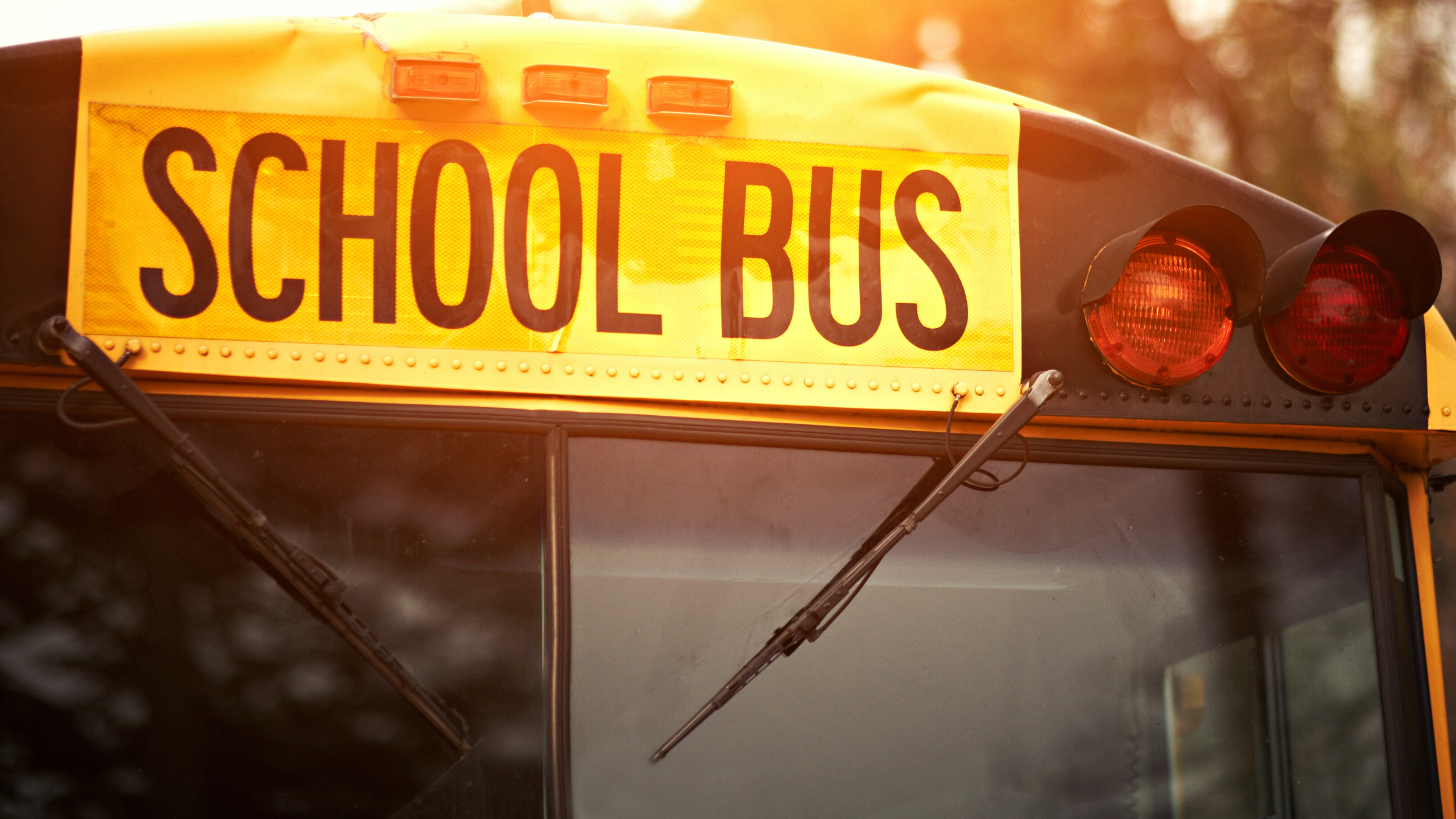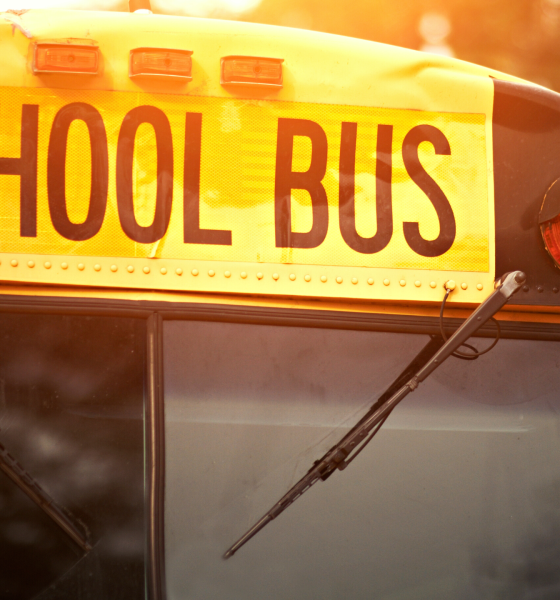

News
SpaceX filing shows plans to bring Starlink to U.S. school buses
SpaceX plans to bring Starlink internet to students on school buses in the U.S., according to a new filing with the Federal Communications Commission.
The space exploration company is collaborating with several school districts for pilot projects in rural areas of the country to support students who have to travel on long bus routes. This gives students internet access while on those long rides.
SpaceX is focusing on school bus routes that are over an hour long each way and are also predominantly inaccessible to other mobile broadband services. In a letter addressed to FCC Secretary Marlene Dortch, SpaceX expressed its support for the agency’s efforts to fund the Schools and Libraries Universal Service Support Mechanism (E-Rate program) connecting millions of students who don’t have access to broadband internet.
“SpaceX is committed to ensuring access to high-speed, low-latency broadband service to benefit American students as quickly as possible, not only at home but on their way to and from school. In fact, SpaceX has prioritized connecting otherwise unserved schools and libraries in the most remote parts of the country, including on Tribal lands.”
“SpaceX therefore strongly agrees with Chairwoman Rosenworcel that providing Wi-Fi on school buses is critical to bridging the Homework Gap and that the provision of such services should be eligible for E-Rate support.”
“The Commission should quickly act to expand the scope of the E-Rate program by adopting the Chairwoman’s draft Declaratory Ruling to ensure equitable access to high-speed broadband services on school buses in addition to the already eligible schools and libraries.”
This lines up with what Elon Musk said over the summer about Starlink, education, and access to the internet. When asked about solutions to poverty, he said,”Literacy and access to internet, I think, are fundamentally helpful.”
According to the Borgen Project, 60 million people could be alleviated from poverty if they received two or more years of education or completed secondary school. DoSomething.org notes that over 30 million children are growing up in poverty and that there is only one book for every 300 children in low-income communities.
In addition, a higher percentage of young adults without a high school diploma live in poverty, and 40% of children living in poverty aren’t prepared for primary schooling.
“So I think those things are helpful. Generally, education, obviously, is good. These days you can learn almost anything online. MIT, for example, has all of their lectures online and a number of other universities do. If you wanted to, you could learn almost anything for a very low cost just using a simple phone or an old tablet–a router box basically,” Elon Musk said.
“You’ve got access to all the world’s information. I think that this fact is really underappreciated and it’s something we should be I think pretty excited and optimistic about or feel good about which is that information before the internet was very limited.”
“If you wanted to learn a skill or trade or learn something, you would have to go to a school and you’d have to get the specific books or you’d have to go to a library in that library wouldn’t necessarily have all the books that you’d want. Or maybe there isn’t a library or there might not be a library near where you live.”
“But with the internet, you’ve got instant access to basically all the world’s information. So information equality is really incredible compared to where it used to be.”
In the letter to the FCC Secretary, SpaceX also pointed out that low-income students are affected disproportionately.
“According to a Pew Research Center Study, roughly one-third (35%) of households with children ages 6 to 17 and an annual income below $30,000 a year do not have a high-speed internet connection at home.”
“And many students who need the most support live miles from school, with lengthy commutes but no connectivity. Subsidized funding such as the E-Rate program should address digital equity and enable increased educational opportunities for students across the United States by ensuring access to high-speed internet at home and on the way to school.”
Your feedback is important. If you have any comments, or concerns, or see a typo, you can email me at johnna@teslarati.com. You can also reach me on Twitter at @JohnnaCrider1.
Teslarati is now on TikTok. Follow us for interactive news & more.

News
Tesla FSD successfully completes full coast-to-coast drive with zero interventions
Tesla community members celebrated the milestone on X, and the feat earned praise from some of the electric vehicle maker’s executives.

A Tesla owner has successfully completed a full coast-to-coast drive across the United States on Full Self-Driving (FSD) Supervised. The trip was accomplished with zero interventions.
Tesla community members celebrated the milestone on X, and the feat earned praise from some of the electric vehicle maker’s executives.
FSD Coast-to-Coast
The coast-to-coast feat was accomplished by Tesla owner Davis Moss, who drives a stealth gray Model 3 with AI4 hardware. Based on data from the FSD database and a community tracker, the last 10,638.8 miles Moss drove in his Model 3 were completed using FSD 100% of the time. His vehicle is equipped with FSD v14.2.1.25, which was installed 12 days ago.
As per Moss in a celebratory post on X, his Model 3 was able to complete a full coast-to-coast drive across the United States in 2 days and 20 hours. His trip started at the Tesla Diner in Los Angeles, CA, and it ended in Myrtle Beach, SC. Overall, his trip spanned 2,732.4 miles.
“This was accomplished with Tesla FSD V14.2 with absolutely 0 disengagements of any kind even for all parking including at Tesla Superchargers,” Moss stated in his post. He also added in later comments that there were zero close calls during the trip.
Tesla community celebrates
The FSD milestone trip was widely lauded by members of the Tesla community, especially since a coast-to-coast drive with zero interventions has been cited by Elon Musk as a target since October 2016, when Autopilot 2.0 was unveiled. At the time, Musk initially estimated that a coast-to-coast drive across the United States should be possible by the end of 2017. Considering Moss’ feat in his Model 3, it appears that Elon Musk’s estimate was not impossible at all. It was just late.
Musk himself celebrated the milestone on X, and so did Tesla VP of AI Software Ashok Elluswamy, who wrote “World’s first fully autonomous coast-to-coast drive, done with Tesla self-driving v14. Congrats and thank you @DavidMoss!” in a post on X. The official Tesla North America account also celebrated the feat, writing “First Tesla to drive itself from coast to coast w/ FSD Supervised. 0 interventions, all FSD” on X.
Elon Musk
Elon Musk: Tesla Model Y is world’s best-selling car for 3rd year in a row
The Model Y has now established an impressive streak that would otherwise have been impossible before Tesla.

Elon Musk has announced that the Tesla Model Y has become the world’s best-selling car by volume for the third consecutive year, capping 2025 with another dominant performance.
The Model Y has now established an impressive streak that would otherwise have been impossible before Tesla.
Three years in a row
Musk posted on X: “Tesla Model Y is now officially the world’s best-selling car for the third year in a row!” The CEO’s comment echoed an update that Tesla included in its 2025 recap, which highlighted, among other things, the Model Y’s incredible streak.
The Model Y has held the title since 2023, outperforming traditional leaders like the Toyota RAV4 and Corolla thanks to its bang-for-the-buck nature and its stellar combination of practicality, performance, and tech. The Model Y is also lauded as one of the safest vehicles on the road, making it an ideal choice for families in key markets such as China.
An impressive 2025
The Model Y’s sales feat in 2025 is especially impressive considering the introduction of the vehicle’s new variant. Tesla’s changeover to the new Model Y across its global factories resulted in sales being paused for some time in the first quarter. As per Tesla’s Q1 2025 vehicle delivery and production report, “the changeover of Model Y lines across all four of our factories led to the loss of several weeks of production in Q1.”
This suggests that the Model Y’s sales remained strong in 2025 to the point where it could still claim the title of the world’s best-selling vehicle by volume, even with its sales being throttled during the first quarter of the year. It would then be interesting to see just how far the Model Y can go in 2026, especially considering the rollout of new variants like the six-seat extended wheelbase Model Y L, the affordable Model Y Standard, and the top-tier Model Y Performance.
News
Tesla shares epic 2025 recap video, confirms start of Cybercab production
The cinematic montage, posted by the official Tesla account on X, celebrated the company’s progress in EVs, energy, and Robotaxi development.

Tesla has released an epic year-in-review video for 2025, recapping some of its major achievements from refreshed models to autonomy breakthroughs and production ramps.
The cinematic montage, posted by the official Tesla account on X, celebrated the company’s progress in EVs, energy, and Robotaxi development while looking ahead to an even bigger 2026.
Tesla’s 2025 highlights recap
Tesla has had a busy 2025, as highlighted in the recap video. The video opened with Elon Musk explaining the company’s pursuit of sustainable abundance. A number of milestones were then highlighted, such as the rollout of FSD v14, Optimus’ numerous demos, the opening of the Tesla Diner in Hollywood, LA, the completion of the world’s first autonomous car delivery, and the launch of the Robotaxi network in Austin and the San Francisco Bay Area.
Tesla also highlighted several of its accomplishments over the year. As per the company, the Model Y was the year’s best-selling vehicle globally again, and Teslas became more affordable than ever thanks to the Model 3 and Model Y Standard. Other key models were also rolled out, such as the refreshed Model S and X, as well as the new Model Y, the new Model Y Performance, and the six-seat, extended wheelbase Model Y L.
The Megablock was also unveiled during the year, and the Supercharger Network grew by 18%. Over 1 million Powerwalls were also installed during the year, and the Cybertruck became the first EV truck to get both an IIHS Top Safety Pick+ award and an NHTSA 5-Star safety rating.
Cybercab production confirmed
Interestingly enough, Tesla also confirmed in its 2025 recap video that the production of the Cybercab has started. This bodes well for the vehicle, as it could result in the vehicle really being mass-produced in the first half of 2026. Elon Musk confirmed during the 2025 Annual Shareholder Meeting that Cybercab production should earnestly start around April 2026.
Musk has also noted that the Cybercab will be Tesla’s highest-volume vehicle yet, with the company aiming for an annual production rate of about 2 million units. “If you’ve seen the design of the Cybercab line, it doesn’t look like a normal car manufacturing line,” Musk said earlier this year. “It looks like a really high-speed consumer electronics line. In fact, the line will move so fast that actually people can’t even get close to it.”







